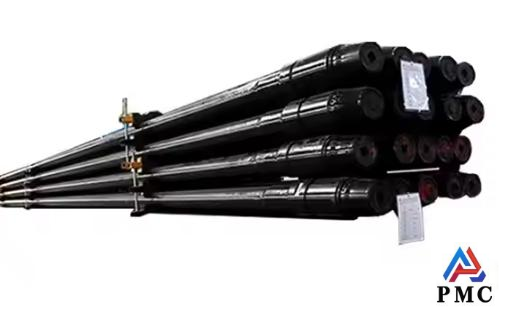
How to Choose and Maintain Oil Drill Pipes?
The oil drill pipe is an important part of oil drilling, and its selection and maintenance are crucial to the success and safety of drilling operations. The following will introduce several key points on the selection and maintenance of oil drill pipes.
Selection of oil drill pipes
1. Material selection: Oil drill pipes are usually made of high-strength alloy steel, among which carbon steel, alloy steel and stainless steel are common choices. Choose the right material according to the working environment and needs.
2. Strength requirements: The strength requirements of the oil drill pipe are determined based on parameters such as drilling depth, well inclination and well diameter. High-strength steel can increase the load-bearing capacity of the oil drill pipe and improve its service life.
3. Drill pipe specifications: The diameter and length of the oil drill pipe need to be determined according to the required well depth and well type. Generally speaking, deeper wells require larger diameter and longer oil drill pipes.
4. Transmission capacity: The oil drill pipe not only needs to rotate during drilling, but also needs to transmit the corresponding torque and thrust. Therefore, when choosing a drill pipe, pay attention to whether its transmission capacity can meet the needs.
5. Corrosion resistance: Drilling operations often involve some corrosive substances, such as brine, acid, etc. Therefore, oil drill pipes need to have good corrosion resistance to extend their service life.
6. Reliability requirements: There are certain risks in oil drill pipes during drilling operations, so the reliability and safety of oil drill pipes should be considered when selecting them.

Maintenance of oil drilling pipes
1. Cleaning and rust prevention: The drill pipe will be corroded by formation mud, oil and other substances during use. Therefore, it should be cleaned in time after use to prevent the damage of residual substances to the drill pipe, and rust prevention treatment should be carried out!
2. Inspection and repair: Check the oil drill pipe regularly and repair or replace it in time if there are any damage or cracks. Especially for the connecting thread part, pay attention to check to avoid oil leakage, thread stripping and other problems.
3. Lubrication and maintenance: The threaded connection parts of the oil drill pipe need to be regularly greased to maintain a good lubrication state. In addition, the oil drill pipe needs to be regularly maintained to prevent corrosion and oxidation.
4. Strength testing: Regularly test the strength of oil drill pipes to ensure that they will not experience plastic deformation or breakage during operation.
5. Storage and transportation: When the oil drill pipe is not in use, it should be properly stored to avoid damage from moisture, heat, humidity, etc. During transportation, appropriate protective measures should be taken to avoid collision and external force.
What are the measures to improve the compressive strength of the oil drill pipe?
To improve the compressive strength of the drill pipe, measures can be taken from optimizing the cross-sectional shape, selecting high-quality materials, strengthening heat treatment, improving drilling technology, etc.:
1. Optimize cross-sectional shape: Improve the compressive strength of the oil drill pipe through reasonable cross-sectional design.
2. Select high-quality materials: Choose materials with high strength and good toughness to manufacture oil drill pipes.
3. Strengthen heat treatment: Improve the mechanical properties of materials and increase the compressive strength of oil drill pipes through heat treatment process.
4. Improve drilling technology: adopt reasonable drilling technology to reduce the adverse effects on oil drill pipes.
The pressure that oil drill pipe can withstand is a complex issue that needs to be considered comprehensively according to the specific situation. In practical applications, the compressive strength of the drill pipe should be determined through experiments and calculations, and corresponding measures should be taken to improve its performance.
Read more: What is the Difference between Oil Drill Pipes and Traditional Steel?


